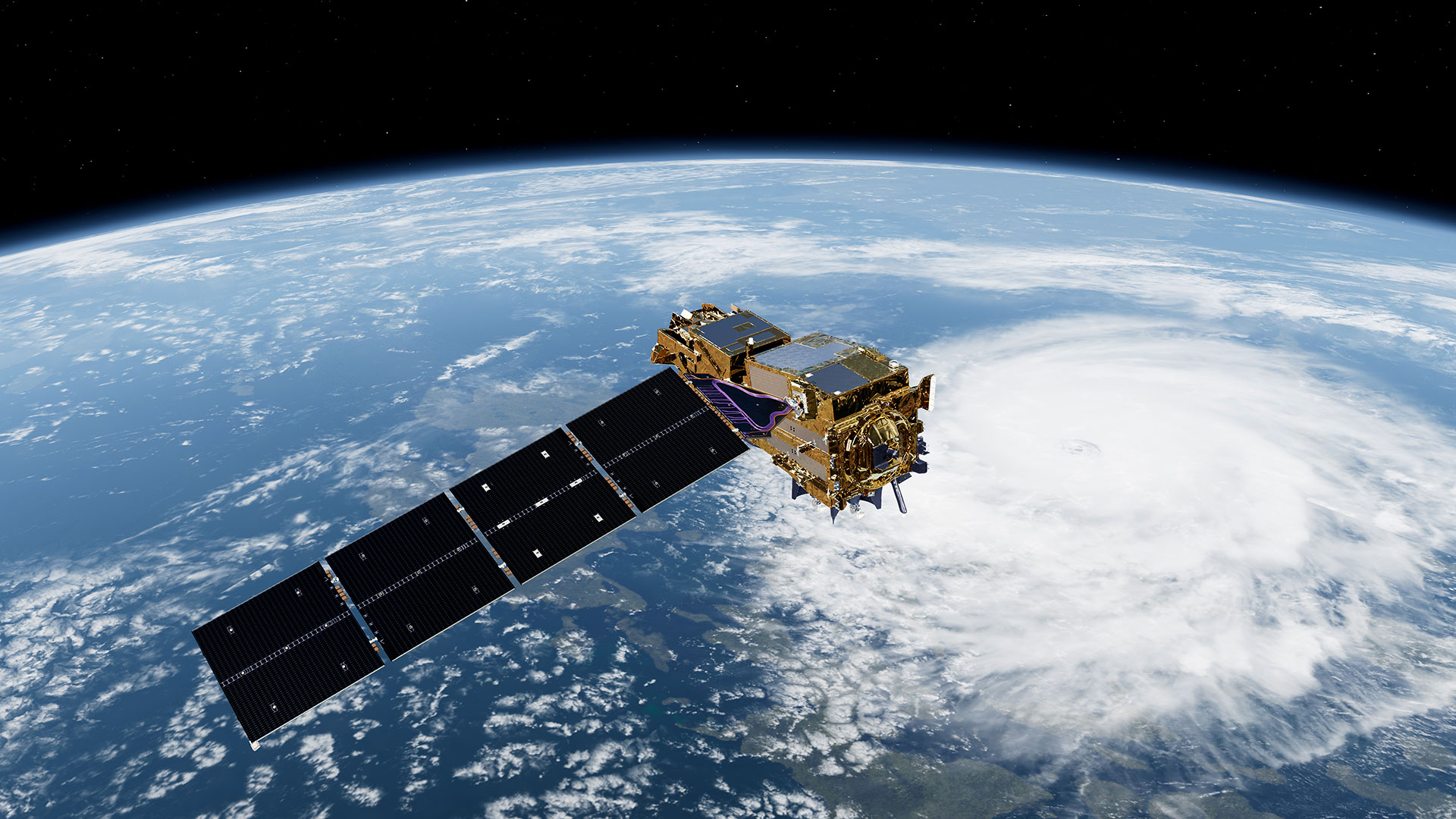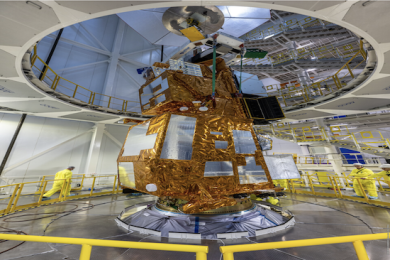Kourou, French Guiana, 13 August 2025 – Ushering in a new era of weather and climate monitoring from polar orbit, Europe’s first MetOp Second Generation (MetOp-SG-A1) weather satellite has been launched aboard an Ariane 6 rocket from Europe’s Spaceport in Kourou, French Guiana. Liftoff occurred at 02:37 CEST (12 August, 21:37 local time), carrying the four-ton spacecraft into a polar orbit roughly 800 km above Earth.
The launch marks a major milestone for the EUMETSAT Polar System - Second Generation (EPS-SG) programme, set to deliver more precise forecasts and earlier warnings to protect lives, property, and economies from extreme weather. MetOp-SG-A1 also carries the Copernicus Sentinel-5 mission to provide critical data on air pollutants, ozone, and climate-related gases.
A New Era in Polar-Orbiting Weather Satellites
MetOp-SG-A1 is the first in a series of three successive A/B satellite pairs to operate over the next two decades, ensuring continuity of global observations from polar orbit for weather forecasting and climate analysis with enhanced accuracy and new measurement capabilities. It will be followed next year by the launch of MetOp-SG-B1, completing the first pair.

Over 95% of weather prediction data comes from satellites. Polar-orbiting satellites like MetOp-SG-A1 circle Earth every 24 hours, travelling pole to pole 14 times a day to provide global, high-resolution atmospheric, ocean, ice, and land observations. Their low altitude enables detailed measurements, complemented by Europe’s Meteosat series in geostationary orbit 36 000 km above the equator for constant large-area coverage. The second Meteosat Third Generation satellite, MTG-S1, carrying Copernicus Sentinel-4, launched in July.
Copernicus Sentinel-5: Advancing Air Quality and Climate Science
The Copernicus Sentinel-5 instrument on MetOp-SG-A1 builds on the Sentinel-5 Precursor mission with an advanced imaging spectrometer, measuring atmospheric trace gases, aerosols, and UV radiation. These observations are essential to understand air quality, climate change, and UV exposure risks, as air pollution leads to four million premature deaths worldwide annually.
Sentinel-5 delivers daily global data to the Copernicus Atmosphere Monitoring Service and Climate Change Service, supporting pollution tracking, greenhouse gas monitoring, and health alerts. Its synergy with EUMETSAT’s meteorological mission optimizes costs and reduces environmental impact by sharing a single launch.

International Collaboration and Economic Benefits
MetOp-SG is the result of cooperation between EUMETSAT and the European Space Agency, with support from the European Union’s Copernicus programme, the French Space Agency, the German Aerospace Centre, and a consortium led by Airbus Defence and Space. MetOp-SG is Europe’s contribution to the Joint Polar System with the United States National Oceanographic and Atmospheric Administration.
Phil Evans, EUMETSAT Director-General, declared, “Extreme weather has cost Europe hundreds of billions of euros and tens of thousands of lives over the past 40 years. The launch of MetOp-SG-A1 is a major step forward in giving national weather services sharper tools to save lives, protect property, and build resilience against the climate crisis.”
EPS-SG is expected to return at least 20-to-1 on investment to Europe’s economy.
Next Steps
With solar arrays deployed and systems nominal, MetOp-SG-A1 will enter in-orbit verification before beginning routine operations. Over its mission lifetime, it will provide high-quality, high-resolution atmospheric and surface data to improve forecasts from 12 hours to 10 days ahead, track long-term climate trends, and inform responses to environmental challenges worldwide.
Reference Points:

